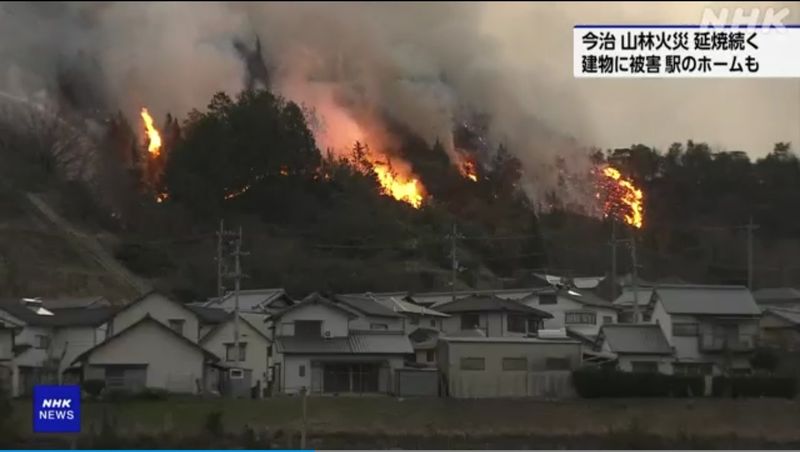Mar 28, 2025
Fire preparedness in Japan
For many expats living in Japan, natural disaster preparedness often brings to mind the likes of earthquakes, typhoons, and tsunamis. However, the increasing frequency of bushfires in Japan (case in point: recent fires in Iwate and Okayama this year) highlights the importance of fire preparedness as well.
Coming from Australia which is no stranger to bushfires on a regular basis, it was a good reminder for me to share some important fire safety tips.

Fires impacting Imabari in Ehime. Screenshot from NHK News.
Japan's Ministry of Agriculture, Forestry, and Fisheries has some useful information online about being prepared for fires. A lot of it is (hopefully) common sense, like not throwing cigarette butts, smoking in designated areas, and not lighting fires during strong wind days and dry periods.
A big part of fire preparedness in my home country is making sure you're keeping vegetation around your home in check. If you live near forested areas or rural landscapes here, it's always a good idea to clear dry leaves and debris from around you to reduce fire hazards. Check your gutters, especially!
Knowing your local evacuation area is always pertinent, too. Most local city offices have this information online, like my area of Minamiuonuma. This is useful not just in the case of fires, but for any natural disaster you might be faced with. I also recommend having an emergency kit (hopefully that's something you already have anyway for other potential disasters), but include some N95 masks in case it gets smoky.
If you hail from a fire-prone country, are there any other recommendations you would make for this type of natural disaster?



1 Comment
TonetoEdo
on Mar 29
My home country, Canada, suffers terrible fires. Provincial and municipal governments have fire prevention and emergency guides. Much of the advice is the same for any emergency. A tip for disaster preparation when electric power fails is the frozen coin trick. Freeze a plastic cupfull of water in the freezer. When it's solid, place a coin on top. In a electrical power failure, if the coin remains on top after the power supply is restored, your food has remained frozen. If it has sunk to the bottom and refrozen, you know the status of the freezer contents. Don't eat.